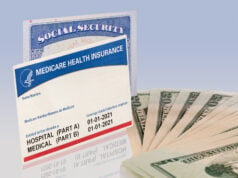
Sitting in one position for long periods of time can make any of us restless, prompting us to fidget and perhaps shake out some pins and needles. But for some people this is an ongoing struggle every time they try to relax or fall asleep.
If you find yourself overcome by unpleasant sensations in your legs and an irresistible urge to move them in order to relieve your discomfort you may be suffering from Restless Legs Syndrome.
What Is Restless Legs Syndrome?
Restless Legs syndrome (RLS) is not your typical sleep disorder. Rather, it’s a neurological sensory disorder that is triggered by the act of resting, or attempting to sleep. Formally called Willis-Ekbom disease, RSL interferes with and prevents sleep by forcing sufferers to move their legs in order to relieve themselves of their symptoms.
Up to 10% of adults are affected by Restless Leg Syndrome. The disorder is slightly more common among women, and can first present itself at any age — even in very young children. However, the most severe cases are usually seen people of middle age or older.
The Symptoms Of Restless Legs Syndrome (RLS)
The hallmark symptom of restless legs syndrome are uncomfortable sensations in your legs, along with an irresistible urge to move which brings relief.
People with RLS have difficulty describing the sensations they experience, but they typically use words such as: itching, throbbing, pulling, crawling or creeping. They most commonly are felt in the legs, but some people experience them in the arms and — more rarely — the chest and head. While they can affect only one side of the body, most people feel them on both sides.
In addition to the primary symptoms, over 80% of people diagnosed with RLS also have episodes of periodic limb movement of sleep (PLMS). There are twitches and jerking movements, typically of the legs but can sometimes involve the arms as well. These involuntary movements happen 2-4 times per minute, and can go on all night long.
Video by SciShow on YouTube.com[/vc_message]
Disclaimer
The information contained in South Florida Reporter is for general information purposes only.
The South Florida Reporter assumes no responsibility for errors or omissions in the contents of the Service.
In no event shall the South Florida Reporter be liable for any special, direct, indirect, consequential, or incidental damages or any damages whatsoever, whether in an action of contract, negligence or other tort, arising out of or in connection with the use of the Service or the contents of the Service. The Company reserves the right to make additions, deletions, or modifications to the contents of the Service at any time without prior notice.
The Company does not warrant that the Service is free of viruses or other harmful components












